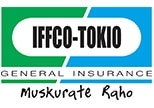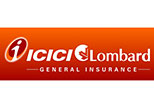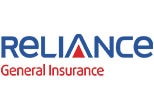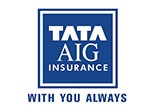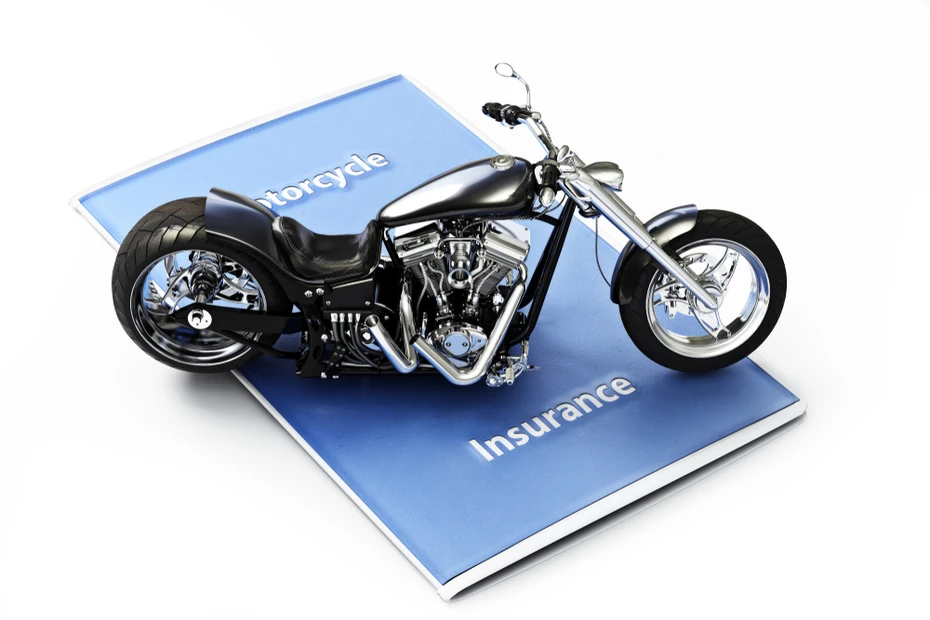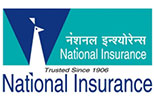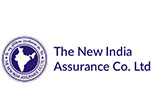Own Damage Two Wheeler Insurance
What is Own Damage Bike Insurance?
Own Damage Insurance for Bike - A OD bike insurance is a type of bike insurance plan which provides an insurance cover only for your bike's own damages. The plan safeguards your bike against own damages incurred due to accidents, natural calamities, man-made disasters, fire, theft as well as damages incurred in transit.
The standalone own damage bike insurance plan came into existence in September 2019 after the Insurance Regulatory and Development Authority of India (IRDAI) allowed its purchase.
What are the Features of Own Damage Cover in Bike insurance Plan?
The features of own damage cover in a bike insurance plan are as follows:
- Under this insurance plan, the policyholder receives coverage for both insured vehicles along with the third party liability.
- An own damage insurance is extensive, wherein an individual can select add-on riders in order to enhance their basic insurance plan coverage.
- The premium paid against own damage insurance is a bit on the higher side as compared to the third party insurance plan.
- Under this plan, the insured bike receives coverage against natural calamities, man made calamities and also damage from any third party due to any accident or mishap with the insured bike is also covered.
Comparison: Own Damage Insurance Vs Comprehensive Bike Insurance
Highlighted below is the difference between Own damage insurance and Comprehensive bike insurance:
Basis | Third Party Insurance | Standalone Own-Damage Insurance | Comprehensive Bike Insurance |
Definition | This type of insurance coverage provides coverage for third party liabilities including bodily injuries, death and property damage. It is compulsory according to the Motor Vehicles Act of 1988. | This type of insurance provides coverage for the damage to the policyholder's vehicle. It is not compulsory, however, provides greater protection than just third party insurance. | This type of cover provides coverage for both third party liabilities as well as own-damage costs under a single premium. |
Coverage | Third party liabilities only | Own-damage costs only | Third party liabilities and own-damage costs |
Benefits | It is compulsory and without it you can be heavily fined. Additionally, in case you have a mishap you don't need to worry about the cost. | It covers a number the cost of own damage including the natural calamities, vandalism, accidents, total damage and theft. You can purchase add-on covers and receive NCB for this type of cover. | Both third party liabilities and own damage, Additionally, you will also be eligible for NCb on the own-damage cover and be able to purchase add-on covers. |
Premium Amount | Low Premium | Higher Premium decreases with time. | Higher Premium accommodates both covers under a single premium. Own-damage cover cost decreases with time. |
Depreciation Rate | Not affected by the depreciation rate | Affected by the depreciation rate | Own-damage cover affected by depreciation rate. |
What Is Covered Under Standalone Own Damage Cover for Two Wheeler Insurance?
A standalone OD bike insurance plan provides coverage for the following:
1. Accidental Damages - This plan gives coverage for the damages sustained by your bike in an accident or collision.
2. Natural Disasters - A standalone own damage plan keeps your bike insured against damages incurred in earthquakes, floods, cyclones, and other natural calamities.
3. Man-Made Disasters -The plan also keeps you insured against damages incurred in strikes, riots, explosions, and other man-made disasters.
4. Theft - A standalone own damage plan also keeps you insured against theft of your bike.
5. Fire -This plan also covers the own damages caused to your bike by fire and explosions.
What Is Not Covered Under OD Bike Insurance?
The following things are not covered in standalone own damage two-wheeler insurance:
1. Third Party Liability - Only the losses or damages caused to own vehicle is covered under standalone own damage bike insurance. It does not offer coverage for third party losses or damages.
2. Consequential Damages - Damages that have been caused to the bike consequently and not during an accident are not covered under standalone own damage.
3. Contributory Negligence - In case the policyholder does something on purpose that they were not supposed to do, then in that case their two-wheeler would not get covered. For instance, it is raining heavily and the whole city is flooded and if the policyholder still went out on their two-wheeler for a ride which consequently leads to the damages.
Benefits of Two-Wheeler Own Damage Insurance
A standalone own damage two-wheeler insurance plan offers the following benefits to policyholders:
1. Option of Different insurers
With the introduction of standalone own damage bike insurance plans, the bike insurance policyholders can now opt for a third party insurance cover and an own damage insurance cover from different insurance providers of their choice.
2. Flexibility in Tenure of Own Damage Plan
The new bike owners are no more bound to purchase a long-term comprehensive insurance policy due to the compulsion of holding a long term third party plan. Now, they can now have a long-term third-party insurance plan of 5 years and a standalone own damage plan of 1 year, which they can renew every year.
3. Economical
With the breakup of long term comprehensive insurance plan into long-term third-party insurance and short term own damage plan, the insurance plans have now become economical for the policyholders. Also, the policyholders can buy their own damage policy from the insurers providing the most affordable insurance offers that can enhance their financial benefits.
Who Should Buy a Standalone Own Damage Two Wheeler Insurance?
A standalone own-damage cover will compensate the policyholder for losses including accidental damages, damages due to transit, theft or vandalism, natural calamities and man-made disasters. However, the limit to the compensation you can receive depends on the Insured Declared Value or IDV. The IDV, in turn, is heavily determined by the depreciation rate which gets higher with the bike's age. The following table explains how the depreciation rate works:
Vehicle's Age | Depreciation Rate |
0-6 months | 5% |
6 months - 1 year | 15% |
1 - 2 years | 20% |
2-3 years | 30% |
3-4 years |
40% |
4-5 years | 50% |
Thus with the depreciation rate affecting your compensation value, there are points when after the 5-year mark it may make more financial sense to simply set aside some money for your possible mishap and keep only your third party insurance updated. However, keep in mind, if your bike is new, or an expensive bike it makes sense to keep the own-damage cover since the compensation even with high depreciation rates still offers quite a bit of money. Lastly, you can also purchase a zero depreciation cover as an add-on to the existing own-damage plan.
How Much Protection Needs to be Availed for Standalone Own Damage Insurance?
In case of own damage insurance plan, the amount of protection that needs to be availed is dependent upon the IDV of the bike. Generally, a bike insurance coverage is dependent upon the Insured Declared Value of the two-wheeler, wherein the insurance provider makes payment only up to the IDV if any eventuality happens. Therefore, it would be right to assume that the amount that will be received by you will be dependent upon the existing market value of your bike.
How is the Own-Damage Cover Premium Calculated?
There are three main factors that are accounted for when calculating the insurance premium of a standalone own-damage bike insurance policy. The bike's IDV, it's cubic capacity and the age of the vehicle. However, doing this manually can be a tricky business. Hence, we have a premium calculator that will do all the work for you. Click here to calculate your insurance premium.
Own Damage Bike Insurance - Renew Policy with InsuranceBox
The following steps will help you renew your bike insurance policy online:
Step 1: Visit our website InsuranceBox
Step 2: Provide your bike's registration number, fuel type and variant to proceed. In case you do not remember these details you can also enter your bike's brand name, model, make and year of registration, city of registration and RTO.
Step 3: Enter the expiry date of the insurance policy of the previous year along with the name of your insurance provider.
Step 4: Fill in the section with your personal details, i.e., name and phone number and select the tenure of your policy. Also, provide the details of any claims you made in the previous year. Next click on ‘Continue'.
Step 5: All the available quotes in your category will be visible on your screen. You can compare them and decide on the policy that is best suited to your needs. At this stage, you can also opt for add-on covers to further strengthen your insurance policy.
Stage 6: After you have selected your policy and add-on covers, click on the ‘Buy Now' button. Make the payment for the selected policy and we will send the policy document to your registered email ID.
How to File for Standalone Own Damage Two Wheeler Insurance?
The following are the documents required to file for the bike insurance claim:
- Copy of policy document
- Copy of FIR
- Copy of registration certificate
- Original bills of the bike's repair
- Evidence of the mishap
The following are the steps required to file for the bike insurance claim:
1. Inform the Insurance Provider: In case of a mishap make sure to take all the safety measures and then call the insurance provider of your bike as soon as possible.
2. Lodge an FIR: In case your bike is stolen or there is any sort of accident involving others it is crucial to file an FIR at the nearest police station. You will require a copy of the same when filing for an insurance claim.
3. Collect Proof: When you make a claim you need to provide proof of the incident being a genuine mishap. Hence collect as much evidence as you can, take pictures or videos and note down the contact of any bystander who saw the incident as well.
4. Submit Documents: The documents required for the claim process may vary slightly according to your situation and/or insurance provider. The most common documents required are listed above and need to be submitted to the insurance provider to process the claim settlement.
5. Surveyor: After the documents are submitted, the insurance company will schedule a visit with the surveyor. He/She will check the damages to the bike to ensure the damage. The surveyor may ask you questions to make sure to answer them honestly, any discrepancies can lead to your claim request being cancelled.
6. Repairs: After the surveyor approves the claim you can send your bike for repairs. It is best to do this in one of the insurance provider's network garages. This way the cost of the repair will be compensated directly with the garage with no out of pocket costs for you.
Which Add-ons Available With Own Damage Bike Insurance Cover?
Below are the add-ons that can be opted with standalone own damage bike insurance cover:
Return to Invoice Cover
In case policyholders' insured bike gets stolen or damaged beyond repair, then return to invoice cover let's the policyholder to get full invoice price for their insured bike.
Zero Depreciation Cover
A nil depreciation cover assists the policyholder in mitigating the burden of bearing the depreciation cost which is incurred by the bike in order to help them in claiming a bigger amount. Almost all insurance companies allow you to make two zero depreciation claims at maximum. However, there are a few insurance companies that allow the policyholder to make unlimited nil depreciation claims like IFFCO Tokio General Insurance Company, New India Assurance Company, and Royal Sundaram General Insurance Company.
Consumables Cover
Bike insurance consumable add on cover offers coverage for the entire consumable items in a two wheeler like grease, oil filter, screw, bolt, etc.
Roadside Assistance
Roadside Assistance add on cover in two wheeler insurance offers assistance services to the policyholder during the incidence of a vehicle breakdown. The services involve towing services, changing flat tyres, repair service on-site, fuel delivery, assistance during the event of loss of keys etc.
Factors That Affect Standalone Own Damage Bike Insurance Premium
The following factors affect the own damage bike insurance premium:
1. Insured Declared Value - One of the primary factors affecting the Own Damage premium for a policyholder's two wheeler is Insured Declared Value, which is the correct market value of the insured vehicle.
2. Bike's Engine Capacity - The speed of the two wheeler is determined by the bike's CC, therefore, the risk associated with the policyholder's bike. Hence, the bike's cc is an important factor in determining the Own damage premium. Moreover, the higher is the bike cc, the higher would be the own damage premium and vice versa.
3. Bike's Age - The newer the bike is, the higher would be its own damage premium and vice versa.
4. No Claim Bonus - The policyholder who priorly had an own damage comprehensive bike insurance cover and did not make any claims can transfer their accumulated NCB for a discount on present own damage premium.
5. Add-Ons Opted - Depending upon the type and number of add on covers chosen, the policyholders' current own damage premium will be affected accordingly.
Check Standalone Own Damage Bike Insurance
Popular Bike Insurance Companies
Insurance Box Contact Details
Reach us for help anytime
-
Insurance Box
info@chriswealthmanagement.com
chriswealthmanagement@gmail.com











